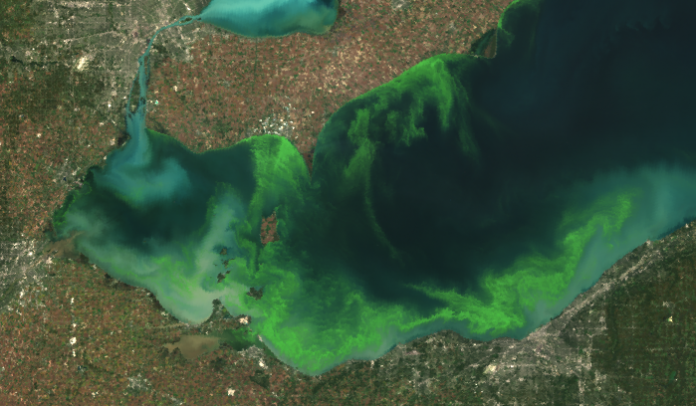
SALEM, Ohio — The National Oceanic and Atmospheric Association says to expect a “significant algal bloom this year,” one that is larger than the bloom of 2012, but less than one-fifth of the near-record bloom of 2011.
“’Significant’ means that people will notice a bloom,” said Richard Stumpf, oceanographer at National Centers for Coastal Science. “However, you can plan your activities around a bloom of this scale.”
Stay informed
Stumpf updated reporters during a harmful algal bloom forecast held July 2 at Ohio State University’s Stone Lab, located on Lake Erie’s Gibraltar Island. He said the bloom will vary depending on weather patterns this summer, including the amount of wind, which could cause it to spread. He said it will most likely be comparable to the bloom of 2003.
Stumpf said anyone interested in getting updates about HABs in Lake Erie should subscribe to NOAA’s Harmful Algal Blooms in Lake Erie Bulletin, which offers weekly updates of bloom locations and impacts.
Algal blooms have been a major topic for livestock and crop farmers the past few years, as state and federal officials study the impact of fertilizer runoff and sedimentation. Phosphorus is a known contributor to the growth of harmful algae, which originates from farmers’ fields, as well as from municipal, residential and business waste.
Nutrient regulation
The state has been working on new regulations with farmers for the past year and a half, and legislation was introduced in June by Ohio Sen. Cliff Hite, R-Findlay, to set new standards for nutrient application, including manufactured fertilizer.
When the algae level goes up, the tourism and recreational industry of Lake Erie suffers, resulting in significant economical and environmental damage.
“In the tourism industry, perception is reality, and if we’re not careful about the way we communicate the issue, we could do more harm than good,” said Melinda Huntley, executive director of the Ohio Travel Association.
Rick Unger, president of Lake Erie Charter Boat Association, said Ohio Gov. John Kasich contacted him before becoming governor, and has played a continuous role in helping fix the problem.
“We’re in the process of getting this problem fixed,” Unger said. “It’s not cheap, it’s not easy, but the good news is we’re gonna save this lake.”
Why Lake Erie?
Phosphorus, which is contained in animal manure and many commercial fertilizers, tends to be the nutrient that determines how much harmful algae can grow in Lake Erie.
Jeff Reutter, director of the Ohio Sea Grant College Program, said the severity of the blooms “is directly related” to the amount of phosphorous entering the lake.
He said Lake Erie experiences the most algal blooms of all Great Lakes, because it is the southernmost, shallowest and warmest of the Great Lakes — all conditions that promote more growth.
Farm-based research
The day of the forecast, Ohio’s major grain organizations released a statement announcing more than $1 million they are spending to conduct on-farm, edge-of-field testing in partnership with The Ohio State University, OSU Extension and the U.S. Department of Agriculture’s Agricultural Research Service.
“While many factors and sources affect water quality, Ohio corn, soybean and wheat farmers are doing their part to maintain and improve the health of Ohio’s waterways,” wrote Tadd Nicholson, executive director of the Ohio Corn & Wheat Growers Association, and Kirk Merritt, executive director of the Ohio Soybean Council.
The research, already in progress, will monitor surface runoff and sub-surface drainage from the edges of fields.
“How phosphorus moves from fields to waterways has never before been explored in such detail in Ohio,” according to the statement. “The results will be used to identify and rank farming practices that are most effective in keeping nutrients on the field and out of waterways, helping farmers to reduce runoff and improve Ohio’s waterways.”
Algal blooms have been an issue in Lake Erie since the 1960s, according to the Ohio State University College of Food, Agricultural, and Environmental Sciences.
Phosphorus levels decreased during the 1980s and 1990s in part due to soil-conserving best management practices implemented by farmers, but within the last decade water quality monitoring has revealed an increase in dissolved reactive phosphorus.










Why does the livestock industry continue to allow CAFOS in this watershed? this issue has been studied for the last 30 years with, it would appear, no recogniable positive results. Senator Portman is well aware of this but once again, gives a poitical answer to the problem. Lake Erie needs help now, not more studies, perhaps a moratorium on the CAFO permits for this watershed would be a step in the right direction.
E